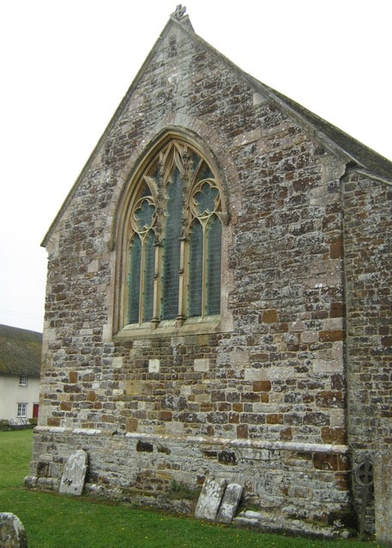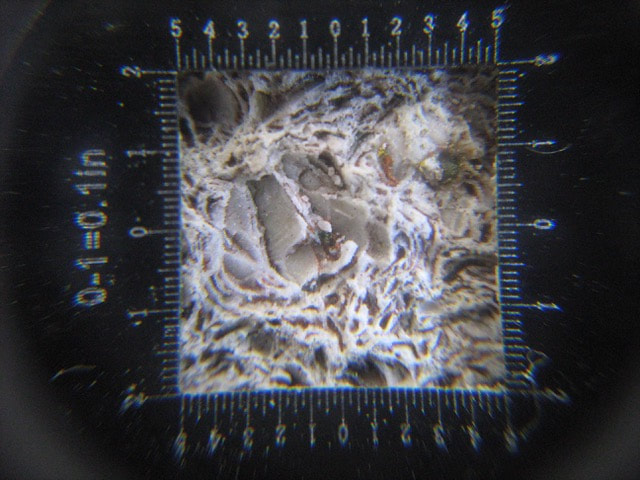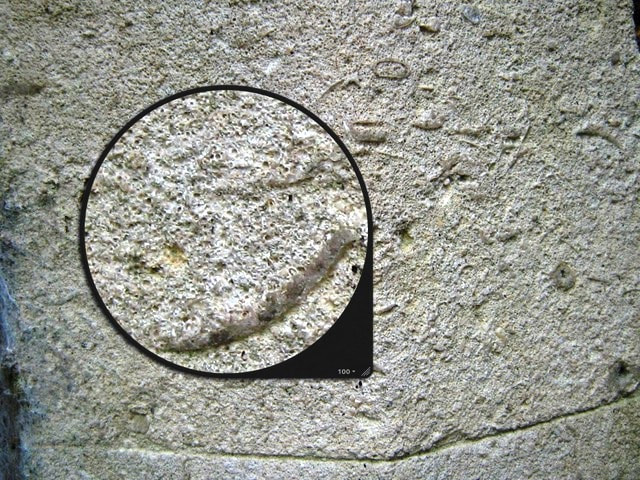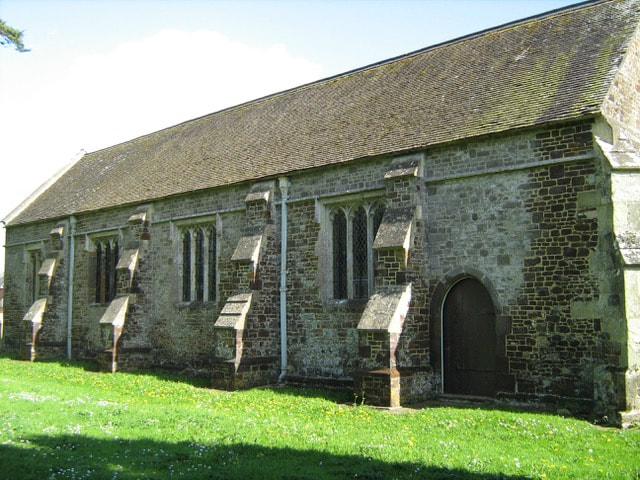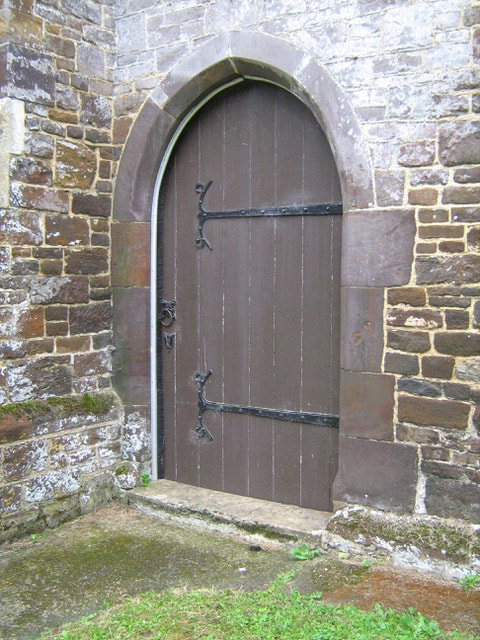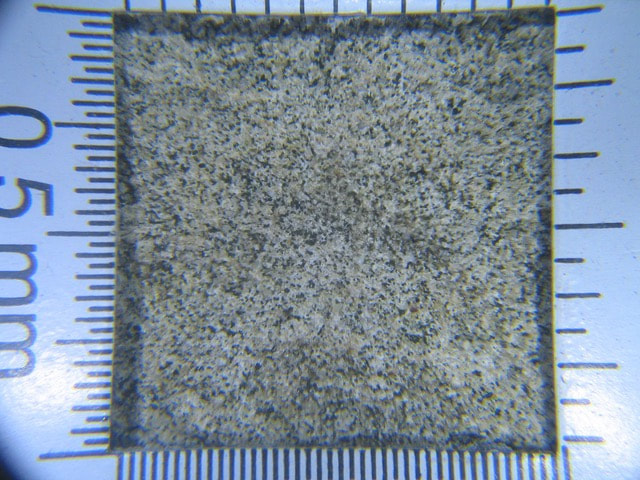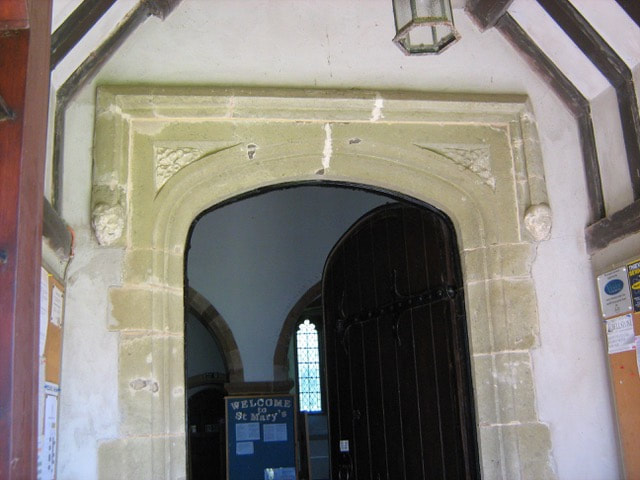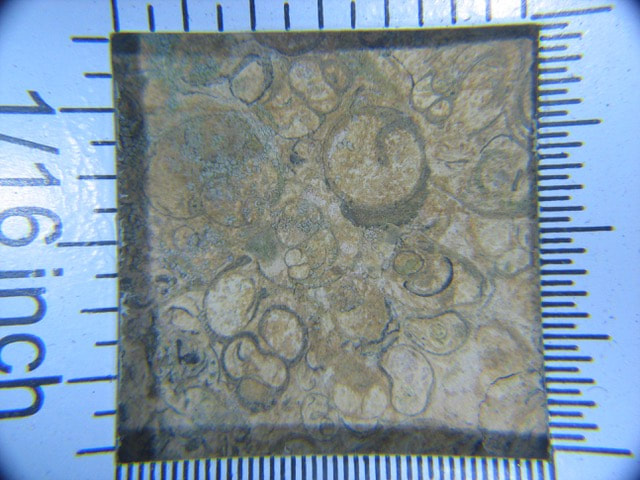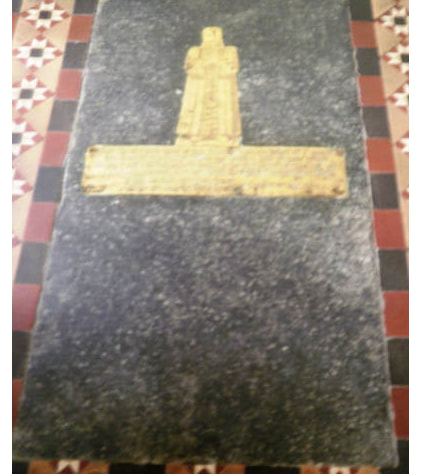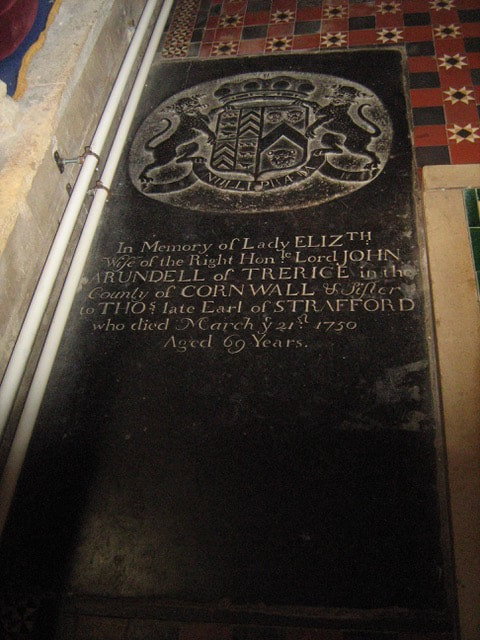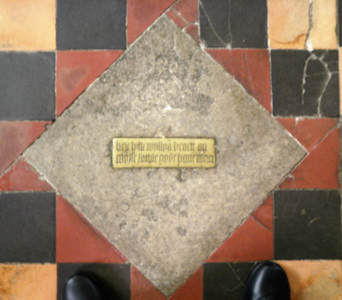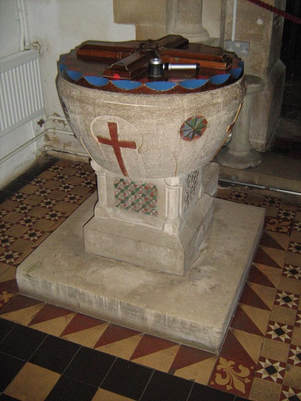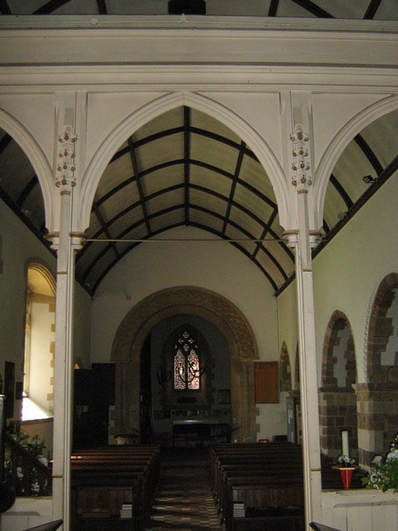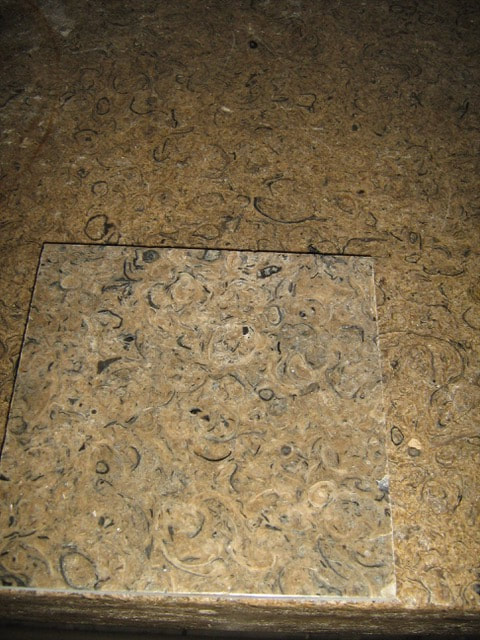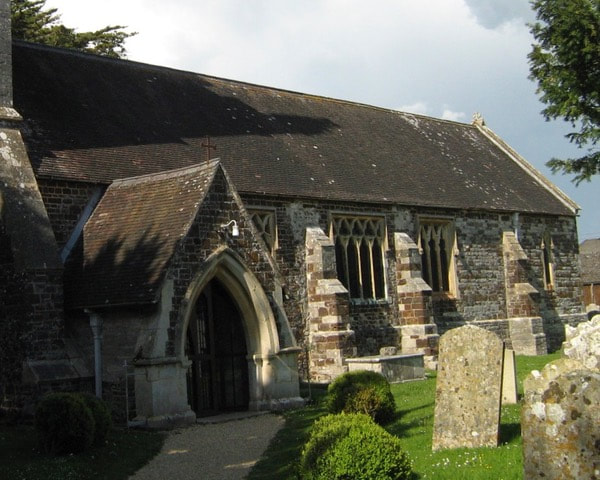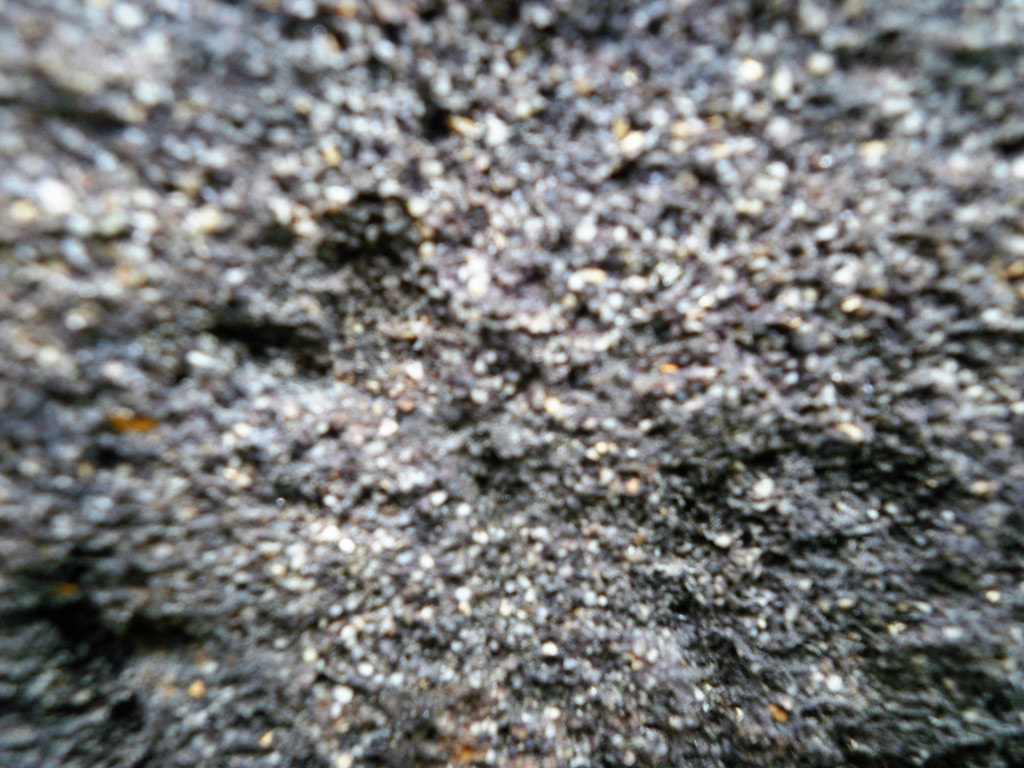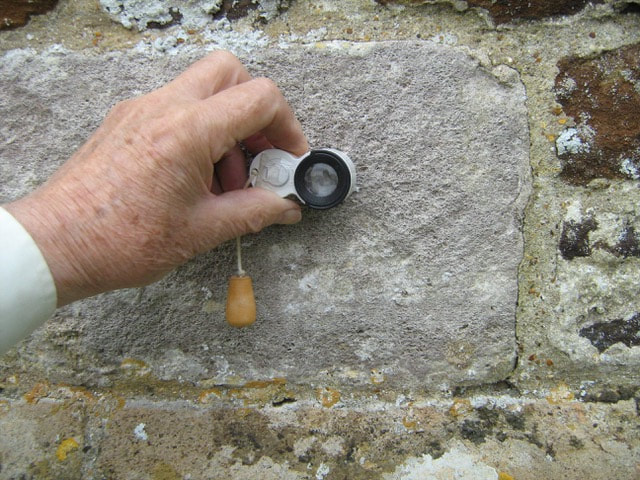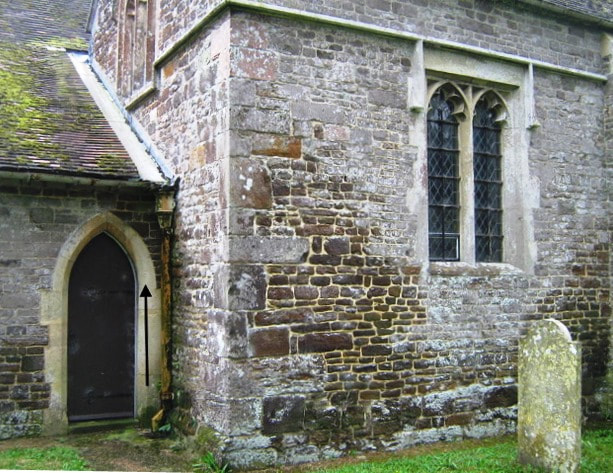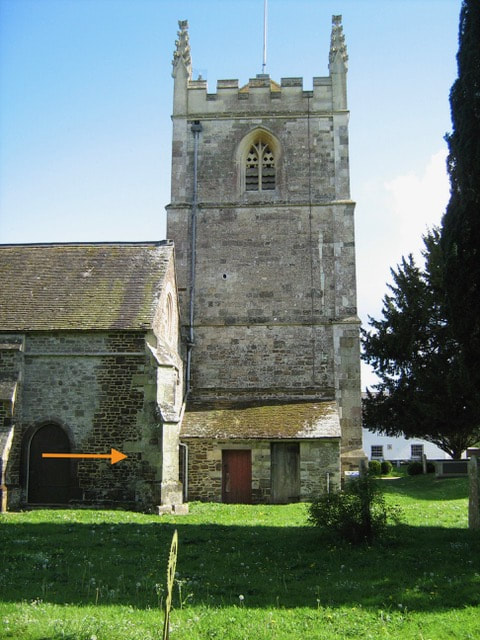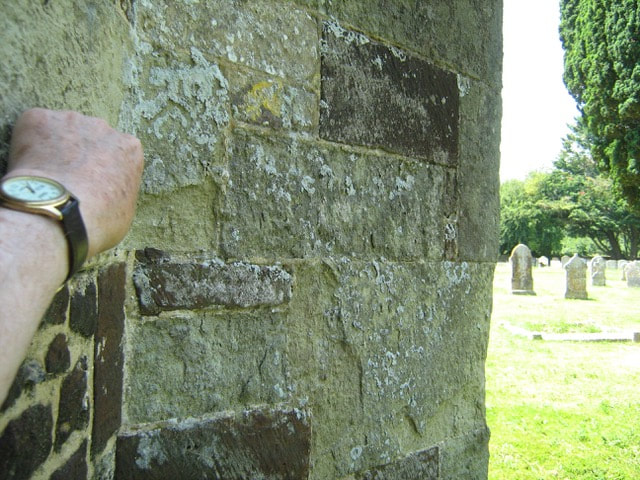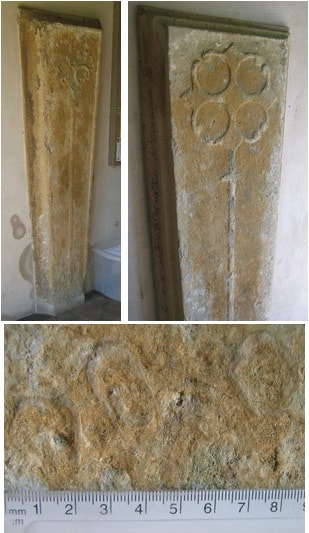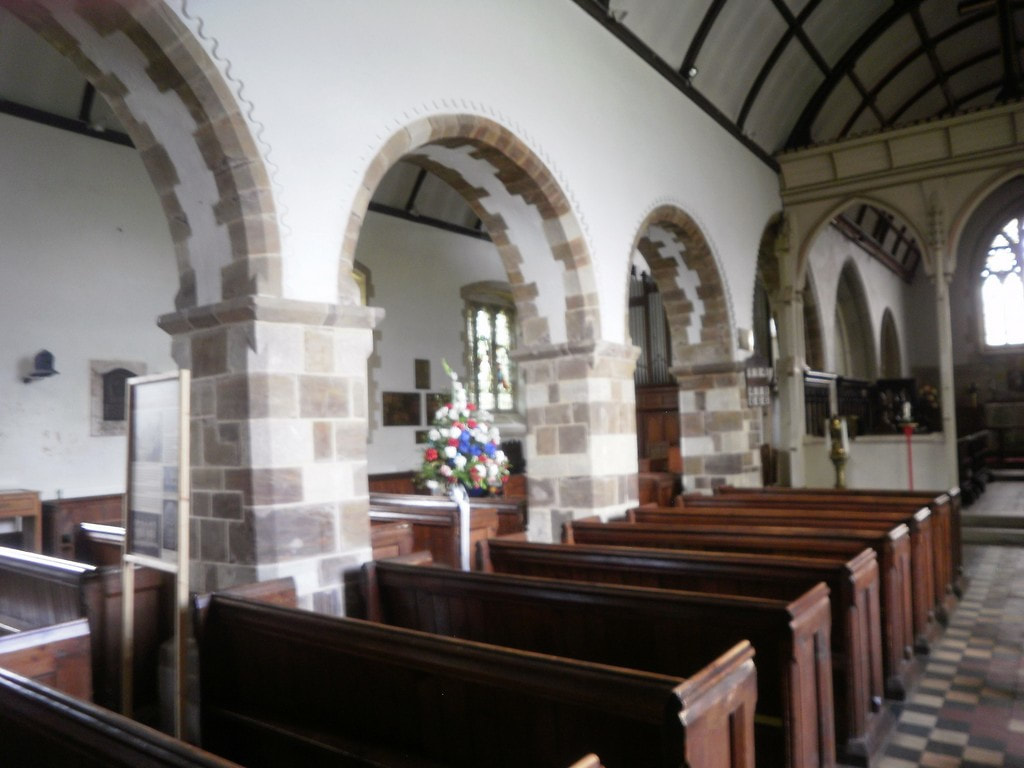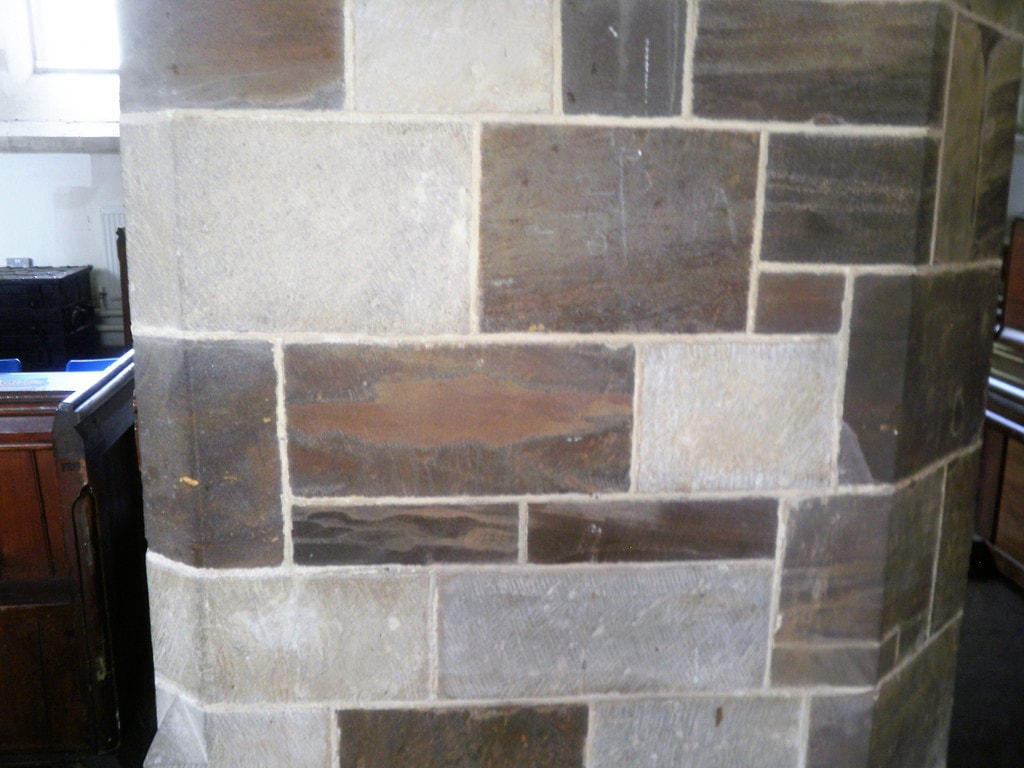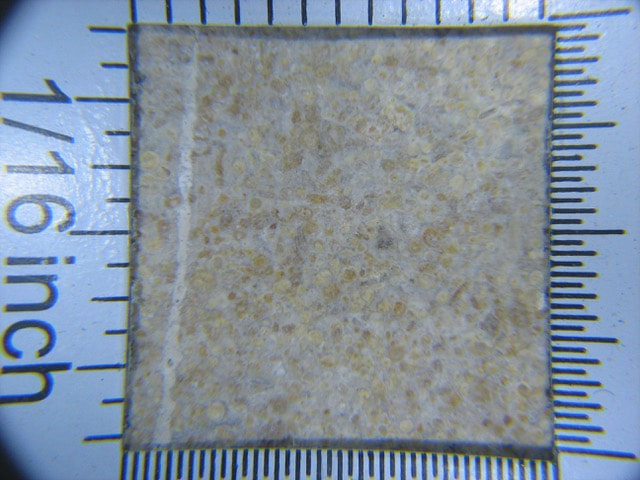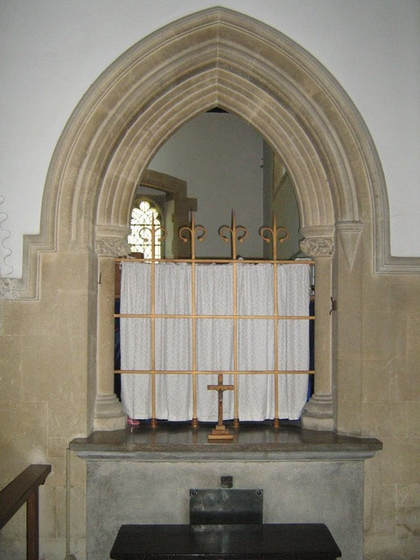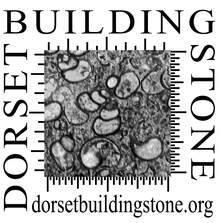St. Mary’s Church, Sturminster Marshall ST95121 00402, 395121 100402, 50.8032 -2.0706
Lead authors: JT and PJB
|
The church was originally built in the 12th century, when it belonged to a hospital in France, but Henry VI granted it to Eton College, who remain the patrons today. It was considerably rebuilt in 1859, using much of the old stone, and some surprisingly far-fetched new ones.
Mixed with the Heathstone in the exterior walls are small blocks of Purbeck limestones from the Intermarine Beds, with the string course at waist height being from the Broken Shell Limestone known as Burr. The string courses above the windows could not be identified due to the height.
Interior. The north arcade dates from the 12th century, and is partly Heathstone partly Burr (Upper Purbeck Broken Shell Limestone). The pillars of the arcade were squared off in the 19th century in order to strengthen them.
The porch is a 19th century construction, with Bath Stone archway on the outside. The again fine-grained, Upper Greensand, inner door-frame just retains its colouration.
The restructuring of 1859 can be identified by the use of the Corallian oolite in the archway to the tower, several pieces of the same stone in the western nave archway, the eastern and southern walls of the chancel, including a sedilia, the doorway in the vestry, and the southern window frames inside. The outer window frames are variously Heathstone, Purbeck Burr, Greensand and Bath Stone.
|
The exterior walls are largely of Heathstone which could have been obtained in the southern part of the parish, from the hill known as Henbury, where the Poole Formation is at present being dug for building sand. The London Clay Formation is found at depth in the current excavation. Both of these Formations yield occasional concretions of iron-cemented sandstone known as Heathstones. They are so variable in colour, iron content and quality of sand as to be impossible to identify precisely. This same hill continues westward into Lytchett Matravers parish, and thence into Morden parish, yielding concretions of Heathstone in many places.
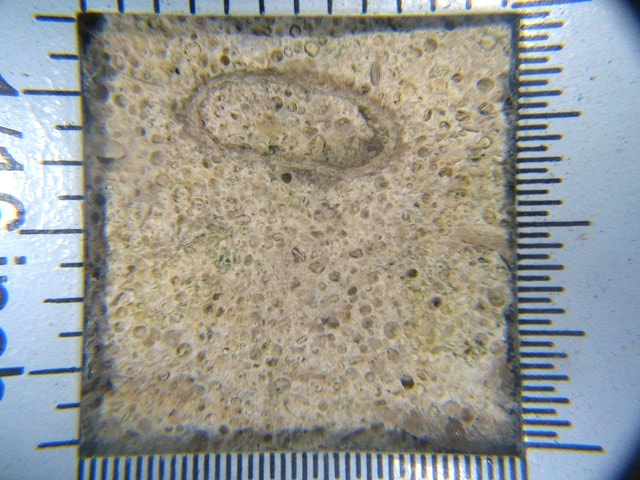
This lower magnification shows another feature of Bath Stone. The thick sparitic cement is far stronger and more resistant than the ooidal grains themselves; so the grains commonly break out leaving cavities termed “spar prominent”. Depending on the direction of light falling on them, these cavities stand out strongly and allow this stone to be quickly identified under any hand lens. PB
In 1859 the tower was heightened with the addition of pinnacles, which appear to be Ham Hill Stone (from the ground view). This castellation was often created in the 19th century in Ham Hill Stone.
Both the north aisle and the chancel were lengthened eastwards in the 14th century, with higher and wider archways. The first is all Heathstone, and the next, partly in the chancel, is built of well sorted fine-grained Upper Greensand. The final, smaller arch on the north side of the chancel was built as part of the 1859 re-structuring, and is of the Corallian oolite known as Marnhull Stone. The tower fell down in 1804, and was rebuilt the following year with Heathstone and Purbeck limestone. The corner buttresses and the quoins again include much well sorted fine-grained Upper Greensand. The sandstone appears finer than Upper Greensand, and includes large grains of glauconite. From the transport point of view Shaftesbury is as near to the River Stour as is Marnhull and it would be possible to bring stone down the river or its valley. Sturminster means – ‘large church by the Stour’.
Monuments in the church are: in the porch two grave slabs, one of Purbeck Marble, the other of a Purbeck limestone not yet identified: in the chancel on the south side a ledger slab of Belgian Black: in the centre of the chancel a ledger slab of Purbeck Marble with an inset brass: on the north side of the chancel a table tomb topped with polished Purbeck limestone: at the chancel steps a small square of polished Purbeck limestone with inset brass.
The font (see left). Historic England records the font bowl as "Purbeck (c.1400) an octagonal bowl with coupled arches to each face, (Victorian re-decorated) and supported on a narrow column, which rests on a 13th century inverted bowl (itself re-cut)." The bowl is of a hard and coarse sparite shelly bioclastic limestone (not Purbeck Marble). The pillar is a calcarenite with spheroids; probably an 1836 Corallian oolite restoration. The base looks to be lime-wash coated Upper Greensand. Common on many fonts; whitewash had originally, and even when washed clean, blended the colours of the various upgrades and repairs using whatever new stone was added. Photo: PB
Text and photos by PB and JT, July 2017
|

